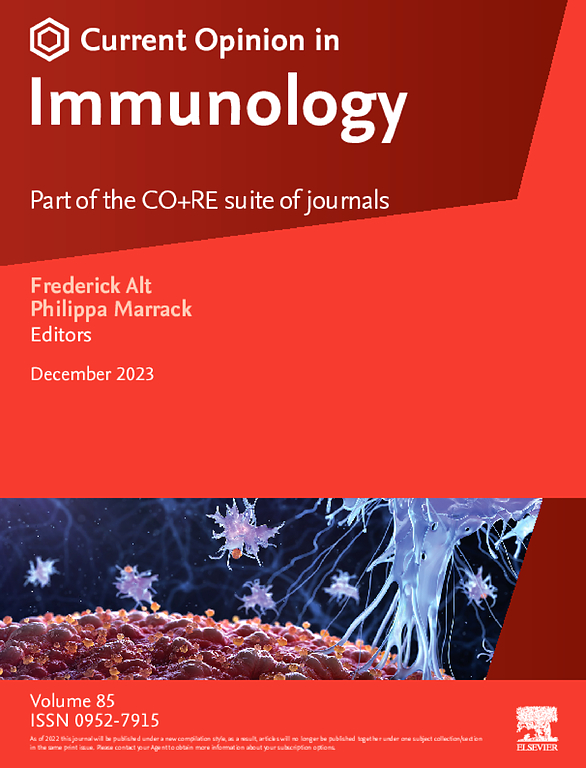Antiviral responses in peripheral and brain neurons
IF 5.8
2区 医学
Q1 IMMUNOLOGY
引用次数: 0
Abstract
Neurotropic viruses represent a public health challenge due to their ability to cause severe neurological conditions, including meningitis, encephalitis, and paralysis. Although many studies have investigated the immune responses to viral infections in the brain and other nervous system targets, most have focused on the effects of resident cells, such as microglia and astrocytes, and infiltrating immune cells, including neutrophils, monocytes, and T cells. However, emerging evidence has demonstrated that neurons themselves mount antiviral responses that suppress viral replication directly and enhance the inhibitory functions of adjacent glial and infiltrating immune cells. In this review, we discuss the intrinsic and extrinsic antiviral responses of neurons, highlighting mechanisms by which they detect viruses and initiate inhibitory responses to protect the nervous system from viral invasion and injury.
外周和脑神经细胞的抗病毒反应。
嗜神经病毒由于能够引起严重的神经系统疾病,包括脑膜炎、脑炎和瘫痪,对公共卫生构成挑战。尽管许多研究已经调查了大脑和其他神经系统靶点对病毒感染的免疫反应,但大多数研究都集中在驻留细胞(如小胶质细胞和星形胶质细胞)和浸润免疫细胞(包括中性粒细胞、单核细胞和T细胞)的作用上。然而,新出现的证据表明,神经元自身产生抗病毒反应,直接抑制病毒复制,增强邻近胶质细胞和浸润性免疫细胞的抑制功能。在这篇综述中,我们讨论了神经元的内在和外在抗病毒反应,重点介绍了它们检测病毒并启动抑制反应以保护神经系统免受病毒入侵和损伤的机制。
本文章由计算机程序翻译,如有差异,请以英文原文为准。
求助全文
约1分钟内获得全文
求助全文
来源期刊
CiteScore
13.30
自引率
1.40%
发文量
94
审稿时长
67 days
期刊介绍:
Current Opinion in Immunology aims to stimulate scientifically grounded, interdisciplinary, multi-scale debate and exchange of ideas. It contains polished, concise and timely reviews and opinions, with particular emphasis on those articles published in the past two years. In addition to describing recent trends, the authors are encouraged to give their subjective opinion of the topics discussed.
In Current Opinion in Immunology we help the reader by providing in a systematic manner: 1. The views of experts on current advances in their field in a clear and readable form. 2. Evaluations of the most interesting papers, annotated by experts, from the great wealth of original publications.
Current Opinion in Immunology will serve as an invaluable source of information for researchers, lecturers, teachers, professionals, policy makers and students.
Current Opinion in Immunology builds on Elsevier''s reputation for excellence in scientific publishing and long-standing commitment to communicating reproducible biomedical research targeted at improving human health. It is a companion to the new Gold Open Access journal Current Research in Immunology and is part of the Current Opinion and Research(CO+RE) suite of journals. All CO+RE journals leverage the Current Opinion legacy-of editorial excellence, high-impact, and global reach-to ensure they are a widely read resource that is integral to scientists'' workflow.

 求助内容:
求助内容: 应助结果提醒方式:
应助结果提醒方式:


